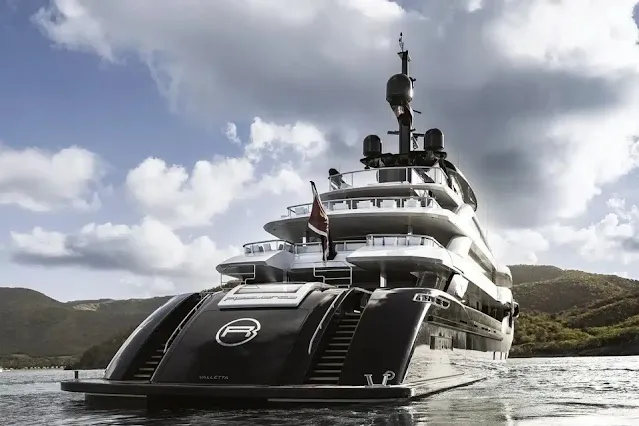In The Haves and the Have-Yachts, journalist Evan Osnos offers a revealing and often absurd look at how billionaires use superyachts not just for luxury, but to project status, escape public scrutiny, and even prepare for civilization's collapse. From Imax theaters to personal submarines, these floating palaces reveal as much about wealth inequality as they do about extravagance.
Inside the Floating World of the Ultra-Rich
In his latest book, The Haves and the Have-Yachts: Dispatches on the Ultrarich, New Yorker writer Evan Osnos dives into the opulent, often surreal universe of billionaire superyacht owners, a world where excess is not just a lifestyle, but a form of competitive sport.
Set in what Osnos calls America's new Gilded Age, the book explores the many avenues the ultra-wealthy use to consolidate power, raise their profiles, and outdo each other: private jets, art collections, foundations, naming rights for hospitals and museums, and increasingly with mega-yachts.
From Stage to Sea: Billionaire Entertainment
Hiring stars like Rod Stewart, Usher, or Mariah Carey to perform at private yacht parties is now standard fare. Some hosts go even further, commissioning “experiential voyages” that reenact American historical battles for the entertainment of what Osnos calls “bored billionaires.”
As wealth accumulates at the very top, the rich have grown less interested in the needs of others and more in besting their peers, in yacht length, luxury bunkers for climate collapse, or just sheer spectacle. One thought experiment in the book asks: in a post-apocalyptic world, would you save the private jet pilot’s family?
LOA: The New Metric of Power
For Osnos, one number reveals everything you need to know about a billionaire: LOA, or Length Overall which is the total length of their yacht.
Take Jeff Bezos. Before launching celebrities like Katy Perry into space, the Amazon founder commissioned a $485 million sailing yacht named Koru. At 127 meters long, it was too tall to pass under Rotterdam’s historic Koningshaven Bridge. The shipbuilder proposed dismantling the bridge; Dutch citizens, predictably, refused.
The demand for these vessels is now outpacing supply. Osnos contrasts this with the stark realities in other parts of the world, where people wait in line for bread, clean water, or vaccines. In the U.S., meanwhile, the number of billionaires has exploded from 66 in 1990 to over 700 in 2023. Superyachts longer than 76 meters? Fewer than 10 in 1990; over 170 today. In contrast, average hourly wages have risen just 20%.
Private Power, Public Inequality
Beyond luxury, Osnos touches on the creeping concentration of power. While Donald Trump has branded himself as a man of the working class, the front row at his inauguration, featuring Elon Musk, Mark Zuckerberg, Bezos, and Sergey Brin that tells a different story. “The world watched as America embraced oligarchy,” Osnos writes, “without shame or pretense.”
Modern Castles, But at Sea
A yacht owner told Osnos that many billionaires are seeking refuge not from the public, but from their own excessive lifestyles on land, and yachts offer the perfect escape. These vessels are today’s castles: private, mobile, and far from the public eye.
What lies inside these floating palaces is even more astonishing: Imax theaters, ski simulators, fully equipped medical labs capable of pathogen testing, and in some cases, even personal submarines wrapped in eel or stingray skin. According to Osnos, deliveries to these yachts can include artisanal bagels from Zabar’s, rare melons from Hokkaido, and discreet sexual services.
A Sinking Investment
Superyachts are notoriously poor financial investments. As The Financial Times put it, “Owning a superyacht is like owning a stack of 10 Van Gogh paintings, that rot in the sea.” But for the ultra-rich, depreciation is beside the point. These vessels deliver something money can’t usually buy status, seclusion, and a stage to display the spoils of excess.

